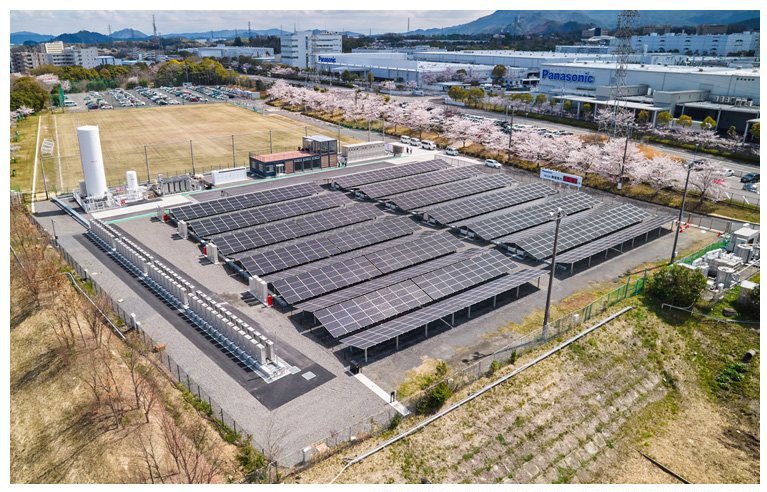Blue View - Panasonic's Hydrogen Powered Factory
/While at the Consumer Electronics Show (CES) we had the opportunity to attend a seminar presented by Panasonic. They hyped several of their new products, but one thing that really got my attention was their new battery manufacturing facility in De Soto, Kansas. They began breaking ground for the new plant in November of last year, and when completed, it will build batteries for EVs. What intrigued me was their commitment to make it totally free of CO2 emissions over the next few years.
Similar Panasonic Plant in Japan
The key to this commitment is through the use of their recently introduced 5kw hydrogen generator, which, as you can probably surmise, uses hydrogen to generate electricity. Hydrogen is the most abundant substance on earth, and when chemically combined with the oxygen in the air, produces electricity, heat and water. A single Panasonic generator produces enough electricity to power a small factory while producing zero greenhouse gases. By placing the generators in parallel, the total electrical output can be scaled up enough to power their entire plant. A smart controller will bring more or fewer generators on-line as needed. The heat generated can be used to warm the building in the cold months, or heat the water in a hot water tank, and, in theory, the water produced should be pure enough to drink.
So, you might ask, where does the hydrogen come from? There are at least four methods for producing hydrogen, but the one that has been around the longest - more than 100 years, is electrolysis. When a DC current is passed through water, the H2O molecules separate into their component parts of oxygen and hydrogen. The hydrogen can be collected and compressed, then stored until needed.
This seems like a circular argument – electricity is used to produce hydrogen, then the hydrogen is used to produce electricity. Since neither of these processes are even close to 100% efficient, it takes far more than 5kw of electrical power to produce the 5kw output of the hydrogen generator. This doesn’t sound like a logical or reasonable design for powering a plant.
If a renewable energy source such as solar or wind generators is the source of the electrical energy, however, and if enough hydrogen can be produced when the sun is shining and/or the wind is blowing to power the plant through a calm night, then we have an almost ideal storage medium. Think of the hydrogen tank as a battery bank without all the negatives... no heavy mining and smelting operations and no recycling of toxic, heavy metals. In addition, the life of a hydrogen tank is considerably longer than the life of a battery bank.
There are some negatives with hydrogen, of course. Hydrogen is extremely flammable – think the Hindenberg, the dirigible that saw its end in a spectacular fiery crash in 1937. But millions of homes deal with tanks of propane or natural gas pipelines everyday, with very few mishaps. Likewise, most of our cars are powered by gasoline, which is also a very flammable liquid. Another negative is that hydrogen requires pumps to compress the gas and a large tank for storage.
Finally, while the production of hydrogen using electrolysis has been around for a long time, except on a very large scale, the methods aren’t particularly efficient or cost effective. This a the renewable energy Holy Grail – how to cost effectively produce hydrogen on a small scale. The good news is that researchers in Belgium, Japan, Israel and Italy, using different approaches, all appear close to solving the problem.
If we think about the Panasonic energy system, there are three major components – a renewable energy source, the mechanism for producing hydrogen and the hydrogen generator. The first and third components are well defined: the factory is large enough to provide roof space for as many solar panels as could possibly be needed, and their stackable, 5kw hydrogen generator is the ideal solution for the third block. Panasonic hasn’t, however, provided details on how they plan to generate the hydrogen gas. Perhaps they have a concrete plan in place, or perhaps they plan to wait a few years until there is a technological breakthrough. I’m looking forward to seeing how they solve this last problem.
Meanwhile, I’ve been wondering whether this energy system could be scaled down to a household size plant, and if so, what the cost would be. Stay tuned - next week I’ll talk about what I find out...




